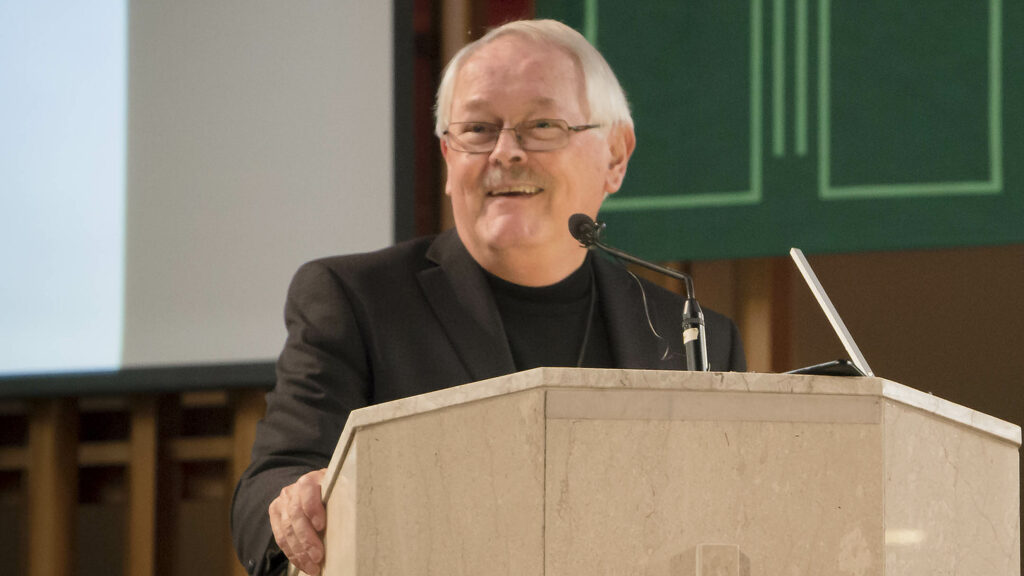No community should botch its deaths. That’s a wise statement from Mircea Eliade and apropos in the face of the death two weeks ago of Kathleen Dowling Singh. Kathleen was a hospice worker, a psychotherapist, and a very deep and influential spiritual writer.
She is known and deeply respected among those who write and teach in the area of spirituality on the strength of three major books: The Grace in Living; The Grace in Aging, and The Grace in Dying. Interestingly, she worked backwards in writing this trilogy, beginning with dying, moving on to aging, and finally offering a reflection on living. And she did this because her grounding insights were taken from her experience as a hospice worker, attending to terminally ill patients. From what she learned from being with and observing the dying taught her a lot about what it means to age and, ultimately, what it means of live. Her books try to highlight the deep grace that’s inherent in each of these stages in our lives: living, aging, dying.
I want to highlight here particularly the insights from her initial book, The Grace in Dying. Outside of scripture and some classical mystics, I have not found as deep a spiritual understanding of what God and nature intend in the process we go through in dying, particularly as is seen in someone who dies from old age or a terminal illness.
Singh encapsulates her thesis in one poignant line: The process of death is exquisitely calibrated to bring us into the realm of spirit. There’s a wisdom in the death process. Here’s how it works:
During our whole lives our self-consciousness radically limits our awareness, effectively closing off from our awareness much of the realm of spirit. But that’s not how we were born. As a baby, we are wonderfully open and aware, except, lacking self-consciousness, an ego, we aren’t aware of what we are aware. A baby is luminous, but a baby can’t think. In order to think it needs to form an ego, become self-aware, and, according to Singh, the formation of that ego, the condition for self-awareness, is predicated on each of us making four massive mental contractions, each of which closes off some of our awareness of the world of spirit.
We form our egos this way: First, early on in a baby’s life, it makes a distinction between what is self and what is other. That’s the first major contraction. Soon afterwards, the baby makes a distinction between living and non-living; a puppy is alive, a stone is not. Sometime after that, a baby makes a distinction between mind and body; a body is solid and physical in a way that the mind is not. Finally, early on too in our lives, we make a distinction between what we can face inside of ourselves and what’s too frightening to face. We separate our own luminosity and complexity from our conscious awareness, forming what’s often called our shadow. Each of these movements effectively shuts off whole realms of reality from our awareness. By doing that, Singh says, we create own fear of death.
Now, and this is Singh’s pregnant insight, the process of aging and dying effectively breaks down these contractions, breaking them down in reverse order of how we formed them, and, with each breakdown, we are more aware again of a wider realm of reality, particularly the realm of spirit. And this culminates in the last moments or seconds before our death in the experience of ecstasy, observable in many terminal patients as they die. As the last contraction that formed our ego is broken, spirit breaks through and we break into ecstasy. As a hospice worker, Singh claims to have seen this many times in her patients.
Elizabeth Kubler Ross, in what has now virtually become the canon on how we understand the stages of dying, suggested that someone diagnosed with a terminal disease will go through five stages before his or her death: Denial, Anger, Bargaining, Depression, Acceptance. Singh would agree with that, except that she would add three more stages: A fall into darkness that verges on despair; a resignation that dwarfs our initial acceptance, and an in-breaking of ecstasy. She points out that Jesus went through those exact stages on the cross: a cry of abandonment that sounds like despair, the handing over of his spirit, and the ecstasy that was given him in his death
Singh’s insight is a very consoling one. The process of dying will do for us what a deep life of prayer and selflessness was meant to do for us, namely, break our selfishness and open us to the realm of spirit. God will get us, one way or the other.
We’ve lost a great woman and a great spiritual writer. Her children, writing on Facebook after her death, said simply that their mother would want us all to know that “she was an ordinary person dying an ordinary death.” But the spiritual legacy she left us is far from ordinary.

